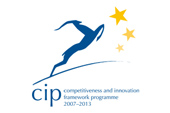
The much awaited science, technology and innovation policy (STIP) 2013 was announced by the government at the Indian Science Congress Centenary sessions held at Kolkata during 3 – 9 January 2013. The discourse on innovation after the declaration of 2010 – 2020 as the ‘Decade of Innovation’; deliberations at the National Innovation Council (NInC) constituted in 2010; and public consultations called by the Ministry of Science and Technology - all seem to have had some bearing on the new STIP. Compared to Science and Technology Policy of 2003, STIP 2013 is a step forward in attempting to forge the links between science, technology and innovation policy framework.
The science, technology and innovation policy (STIP) 2013 was announced by the government at the Indian Science Congress Centenary sessions held at Kolkata during 3 – 9 January 2013.
The STIP 2013 aims to enhance the role of the private sector in the national science, technology and innovation system in a PPP mode, towards attaining the target of 2% of GDP in research and development (R&D). Henceforth, the private sector will be treated at par with public institutions in accessing public funds in R&D via all research and innovation policy measures and instruments. The new policy will promote mechanisms such as ‘Risky Idea Fund’ and ‘Small Idea Small Money’ to capitalise on the existing proposals such as ‘Inclusive Innovation Fund’ of NInC and the experiences of the National Innovation Foundation and Honey Bee Network in grass root innovations. NGOs will be given a major task to deliver and diffuse rural technologies. The government intends to establish a new National Science, Technology and Innovation Foundation in a PPP mode to fund some ambitious projects. There appears to be some focus on the demand side of innovation as well as in linking up of agricultural R&D policy with the national R&D policy. The policy seeks to increase the number of full-time research and development personnel by two-thirds, within five years; and increase publications from the current 3.5% of global share to around 7% by 2020. Not only this, but the policy aims at increasing the publication record in the world’s top 1% of journals four folds. The policy underlines that India should join the top six in the global science and technology by 2020. Having laid some focus on innovation, the document lays down a number of strategies to focus on downsteam R&D and impact side of R&D. Implicit in the document is the underlying idea of the ‘linear model of innovation’. The national policy for the first time has invoked the concept of national innovation system for striving towards the making of a dynamic science, technology and innovation system.The policy vision, as the document observes, is:
'The guiding vision of aspiring Indian STI enterprise is to accelerate the pace of discovery and delivery of science-led solutions for faster, sustainable and inclusive growth. A Stronge and Viable Science Research and Innovation System for High Technology-led path for India (SRISHTI) is the goal of the new STI policy'.
Other important issues of the new STIP 2013 are:
- Special and innovative schemes to boost university - industry relations
- Special focus on inter-University Centres in some niche areas of Science and Technology
-Promote public good in science and innovation where science fuding is public. Bring in appropriate measures in IPR policy
- Ten sectors of high impact potential will be identified for directed STI action
- Performance linked rewards and incentives in public funding in institutions including universities
- A major focus on participating big science projects with the EU and the USA
- A new paradigmatic jump to boost STI in SMEs
- Promote gender equality in science and technology through various schemes and measures
The STIP 2013 full document can be found at the website of DST: http://www.dst.gov.in/index.htm








































































